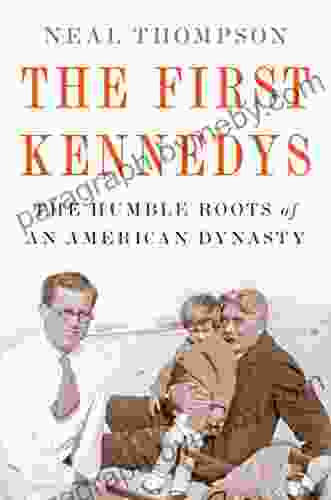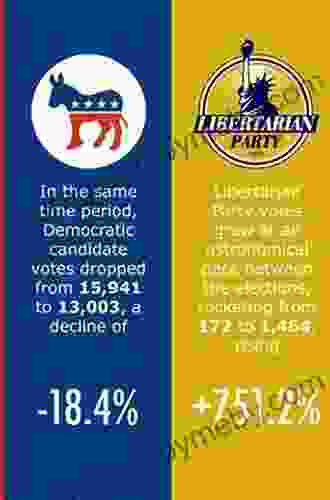Understanding American Political Parties: A Comprehensive Guide to Their Ideology, History, and Influence

Political parties are the cornerstone of American democracy, serving as vehicles for political engagement, policy development, and electoral competition. In the United States, the two dominant parties — the Democrats and Republicans — have shaped the nation's political landscape for over two centuries. This article delves into the fascinating world of American political parties, exploring their ideologies, historical evolution, and the dynamic role they play in shaping the country's politics.
The Democratic Party, generally associated with the left-of-center political spectrum, embraces a platform centered on social justice, economic equality, and environmental protection. Democrats advocate for a strong social safety net, universal healthcare, affordable education, and progressive taxation. The party's ideology aligns with liberal values, emphasizing individual rights, civil liberties, and equality for all.
The Republican Party, positioned on the right-of-center political spectrum, adheres to a conservative platform that emphasizes limited government intervention, free-market principles, and individual responsibility. Republicans support tax cuts, deregulation, a strong national defense, and traditional family values. The party's ideology aligns with conservative values, prioritizing economic freedom, national security, and traditionalism.
4.7 out of 5
| Language | : | English |
| File size | : | 1997 KB |
| Text-to-Speech | : | Enabled |
| Screen Reader | : | Supported |
| Enhanced typesetting | : | Enabled |
| Word Wise | : | Enabled |
| Print length | : | 145 pages |
The origins of the Democratic and Republican parties can be traced back to the 1820s, when political factions emerged around Andrew Jackson and John Quincy Adams. The Democrats, initially known as the Democratic Republicans, coalesced around Jackson's populist appeal and support for states' rights. The Republicans, formed in 1854, emerged as a response to the Democrats' pro-slavery stance and became the party of abolitionism and civil rights.
Throughout the 19th and 20th centuries, the two parties evolved and adapted to changing political and social conditions. The Democrats embraced the New Deal policies of President Franklin D. Roosevelt during the Great Depression, solidifying the party's association with social welfare programs. The Republicans, under President Ronald Reagan in the 1980s, promoted conservative economic policies, including tax cuts and deregulation.
Political platforms are the official statements of each party's principles, policies, and positions on key issues. The platforms serve as roadmaps for the party's agenda and provide a framework for its candidates to run on. The Democratic platform emphasizes social justice, economic equality, environmental protection, and individual rights. The Republican platform focuses on limited government, free-market principles, national security, and traditional values.
The parties' platforms are not static but evolve over time to reflect changing political realities and voter sentiment. The platforms also serve as negotiating tools during elections, as candidates from both parties seek to appeal to a broad range of voters.
The United States has a two-party system, where the Democrats and Republicans dominate the political landscape. This system is unique compared to many other countries, which have multi-party systems with a wider range of political ideologies represented. The two-party system in the U.S. creates a highly competitive electoral environment, where candidates must appeal to the majority of voters to win elections.
The two-party system also contributes to political polarization, as the parties often take opposing stances on issues to mobilize their bases and secure votes. However, the system can also foster compromise and consensus, as the parties need to work together to pass legislation and govern effectively.
The electoral process in the United States is complex and involves several stages, including primaries, caucuses, and general elections. The primaries and caucuses are held within each party to select candidates for the general election. In the general election, voters cast their ballots directly for candidates, and the candidate with the most votes wins.
The electoral process is highly competitive, and parties often engage in campaign strategies such as advertising, rallies, and debates to promote their candidates and sway voters. The ability to raise campaign funds and mobilize volunteers plays a significant role in determining the outcome of elections.
Political parties employ various campaign strategies to maximize their chances of electoral success. These strategies include:
- Developing a strong message: Parties craft clear and concise messages that resonate with voters and highlight the party's key priorities and policies.
- Targeted advertising: Parties use advertising to reach specific voter demographics and deliver tailored messages that appeal to their values and concerns.
- Mobilizing volunteers: Parties rely on volunteers to engage with voters, distribute campaign materials, and get-out-the-vote on Election Day.
- Fundraising: Parties raise funds from individuals, corporations, and other sources to support their campaigns and pay for advertising, staff, and events.
- Data analysis: Parties use data and analytics to understand voter trends, identify target groups, and optimize their campaign strategies.
Political parties play a profound role in shaping the political landscape of the United States. Their influence extends beyond electoral campaigns to influence policymaking, public opinion, and the overall direction of the nation.
- Policymaking: Parties control the legislative agenda and exert significant influence over the laws that are passed. They work to advance their platforms and policies through bills, amendments, and resolutions.
- Public opinion: Parties shape public opinion by framing issues, promoting their perspectives through media, and mobilizing their supporters. They influence the way citizens view political issues and candidates.
- Political culture: Parties contribute to the political culture of the United States by promoting certain values, symbols, and rituals. They help define the boundaries of acceptable political discourse and shape the way citizens engage with politics.
Understanding American political parties is essential for comprehending the complexities of the nation's political system. The Democrats and Republicans, with their distinct ideologies, historical backgrounds, and campaign strategies, have shaped the political landscape of the United States for centuries. Their influence extends beyond electoral politics to impact policymaking, public opinion, and the overall political culture of the nation. As American political parties continue to adapt and evolve, they will undoubtedly play a vital role in shaping the future of the country for generations to come.
4.7 out of 5
| Language | : | English |
| File size | : | 1997 KB |
| Text-to-Speech | : | Enabled |
| Screen Reader | : | Supported |
| Enhanced typesetting | : | Enabled |
| Word Wise | : | Enabled |
| Print length | : | 145 pages |
Do you want to contribute by writing guest posts on this blog?
Please contact us and send us a resume of previous articles that you have written.
 Book
Book Novel
Novel Page
Page Chapter
Chapter Text
Text Story
Story Genre
Genre Reader
Reader Library
Library Paperback
Paperback E-book
E-book Magazine
Magazine Newspaper
Newspaper Paragraph
Paragraph Sentence
Sentence Bookmark
Bookmark Shelf
Shelf Glossary
Glossary Bibliography
Bibliography Foreword
Foreword Preface
Preface Synopsis
Synopsis Annotation
Annotation Footnote
Footnote Manuscript
Manuscript Scroll
Scroll Codex
Codex Tome
Tome Bestseller
Bestseller Classics
Classics Library card
Library card Narrative
Narrative Biography
Biography Autobiography
Autobiography Memoir
Memoir Reference
Reference Encyclopedia
Encyclopedia Jessie Sima
Jessie Sima Jenny Heijun Wills
Jenny Heijun Wills Kohei Horikoshi
Kohei Horikoshi Jeff Davidson
Jeff Davidson Kathleen Souza
Kathleen Souza Robyn Hawkins
Robyn Hawkins Max Wilk
Max Wilk Nina Munk
Nina Munk Laura Furman
Laura Furman Jenny Rae
Jenny Rae Peter Drinkell
Peter Drinkell Rebecca Frankel
Rebecca Frankel Olaf Anderfuhr Tierheilpraktiker
Olaf Anderfuhr Tierheilpraktiker Tony Rican
Tony Rican Seth Tucker
Seth Tucker Jill Angie
Jill Angie Jill Stamm
Jill Stamm Sina Eschenweber
Sina Eschenweber Jeffrey Vonk
Jeffrey Vonk Jessica Marting
Jessica Marting
Light bulbAdvertise smarter! Our strategic ad space ensures maximum exposure. Reserve your spot today!

 Mario Vargas LlosaDiary of a Wimpy Kid: A Hilarious and Relatable Story for Young Readers
Mario Vargas LlosaDiary of a Wimpy Kid: A Hilarious and Relatable Story for Young Readers
 Esteban CoxThe Humble Roots of an American Dynasty: Uncovering the Untold Story of the...
Esteban CoxThe Humble Roots of an American Dynasty: Uncovering the Untold Story of the...
 Jack PowellBig Red: The Father of Santa's Reindeer - Uncovering the Origins of Christmas...
Jack PowellBig Red: The Father of Santa's Reindeer - Uncovering the Origins of Christmas... James HayesFollow ·14.6k
James HayesFollow ·14.6k Don ColemanFollow ·15.9k
Don ColemanFollow ·15.9k Beau CarterFollow ·16.2k
Beau CarterFollow ·16.2k Jan MitchellFollow ·10.5k
Jan MitchellFollow ·10.5k Brennan BlairFollow ·9.6k
Brennan BlairFollow ·9.6k Henry Wadsworth LongfellowFollow ·7.7k
Henry Wadsworth LongfellowFollow ·7.7k Eli BrooksFollow ·17.5k
Eli BrooksFollow ·17.5k Spencer PowellFollow ·13k
Spencer PowellFollow ·13k

 Jeremy Mitchell
Jeremy MitchellUnveiling the Truth: The Captivating Saga of The Elephant...
Embark on a poignant journey through the...

 Marvin Hayes
Marvin HayesThe Day The World Came To Town: A Heartwarming Tale of a...
In the quaint...

 Hugh Bell
Hugh BellExplore the Avian Treasures of Wisconsin: A Review of...
Unveiling the Secrets of...
4.7 out of 5
| Language | : | English |
| File size | : | 1997 KB |
| Text-to-Speech | : | Enabled |
| Screen Reader | : | Supported |
| Enhanced typesetting | : | Enabled |
| Word Wise | : | Enabled |
| Print length | : | 145 pages |











